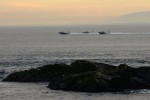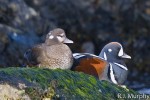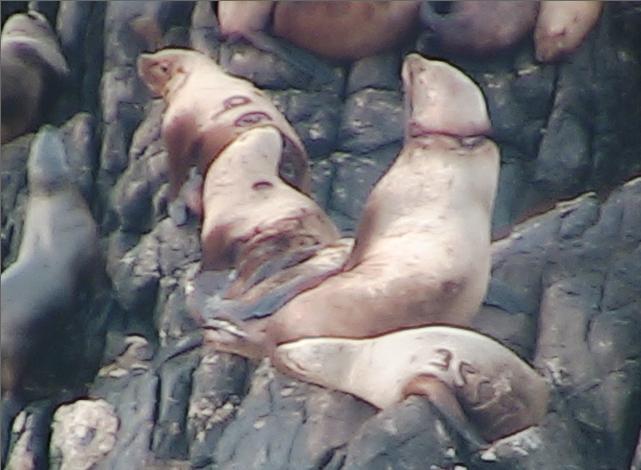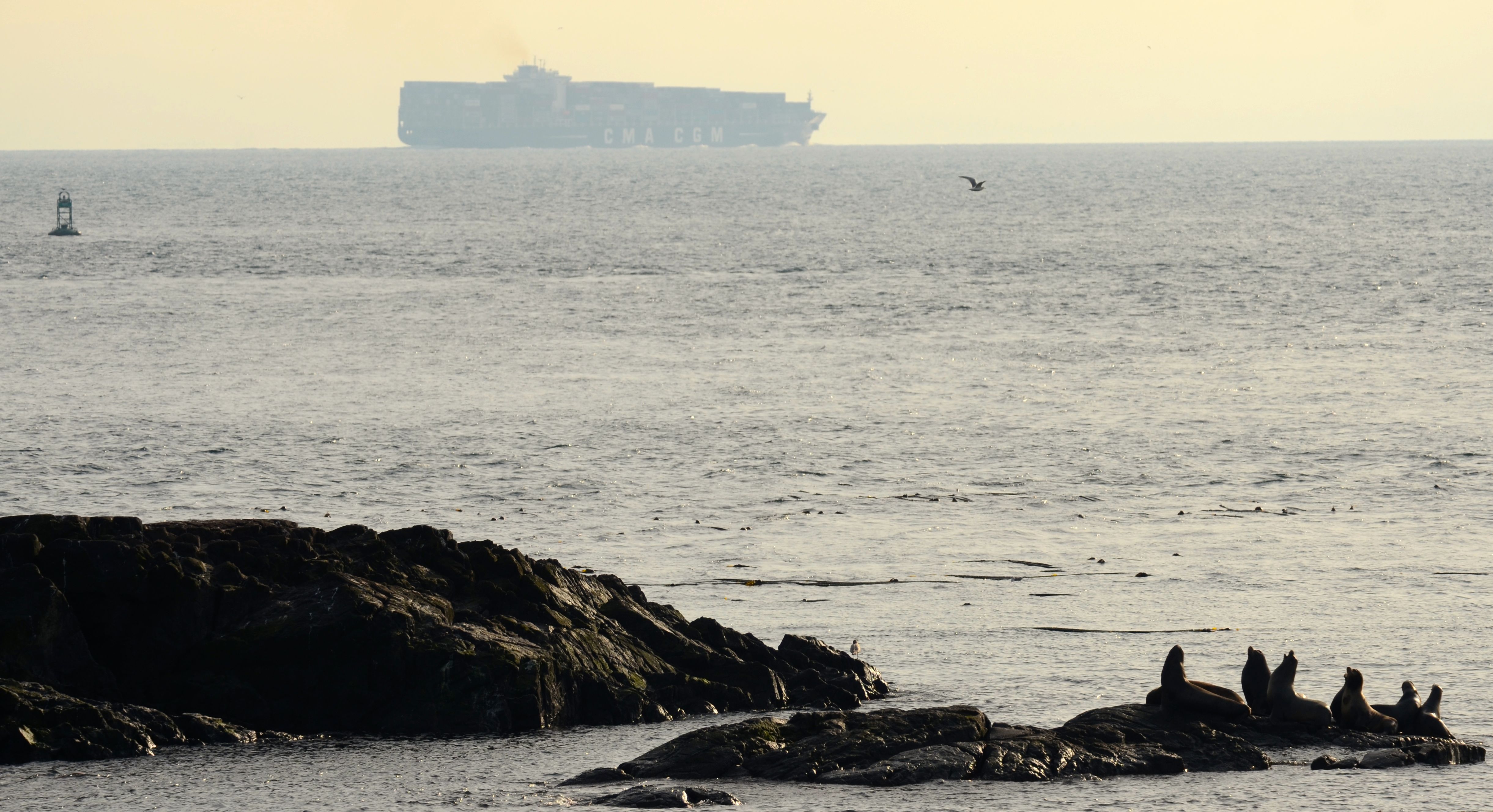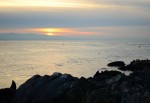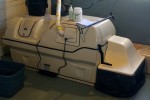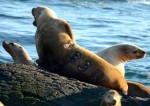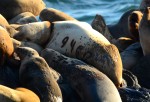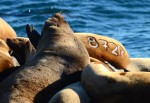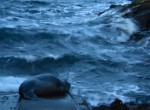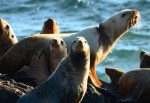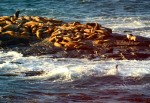Last night the anemometer was reading wind gusts of up to 53 knots from the southwest. That’s 100 km/h! As far as I can tell, nothing blew away overnight. There was a fresh load of driftwood delivered to the beaches. Today, the wind continued to blow from the southwest and west. The wind had low velocity in the morning, rising to the high twenties in the afternoon, and dropping to 11 in the evening. The barometer continued to rise from 990 hPa last night to a high of 1018 hPa tonight. The sky cleared up in the morning, with sun all day.
Four whale watching boats were seen in the reserve this afternoon.
This morning, I saw a black brant goose hanging out with the gulls on the northeast corner of Race Rocks. It was my first time seeing one of these small geese, which rarely visit Race Rocks. This goose might be making it’s way down to the Oregon, California or Mexican coast for winter, from it’s summer home in the Arctic. For more information about black brant geese, see the taxonomy page.
- A black brant goose makes a rare visit to Race Rocks.
- Black brant preening
- Black brant are one of the smallest and fastest of the flying geese.
- Canada geese with sea lions in the background
- Sea lions (mostly steller) gather on the South Islands. The largest sea lion appears to be on top.
- A sea lion leaps out of the water on the wavy west coast of the island















